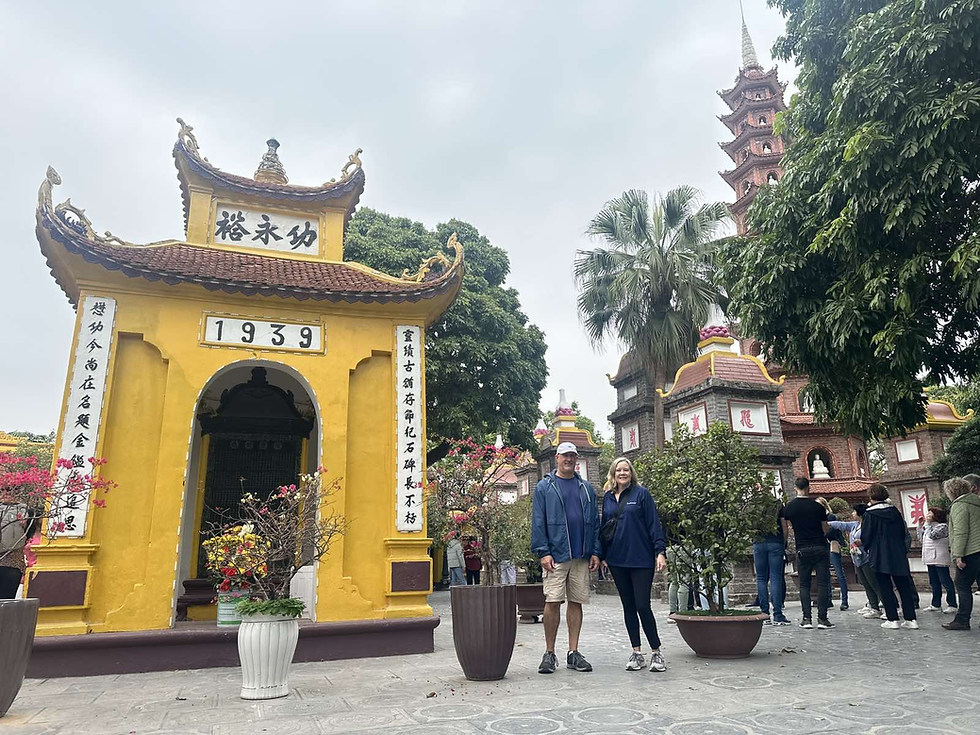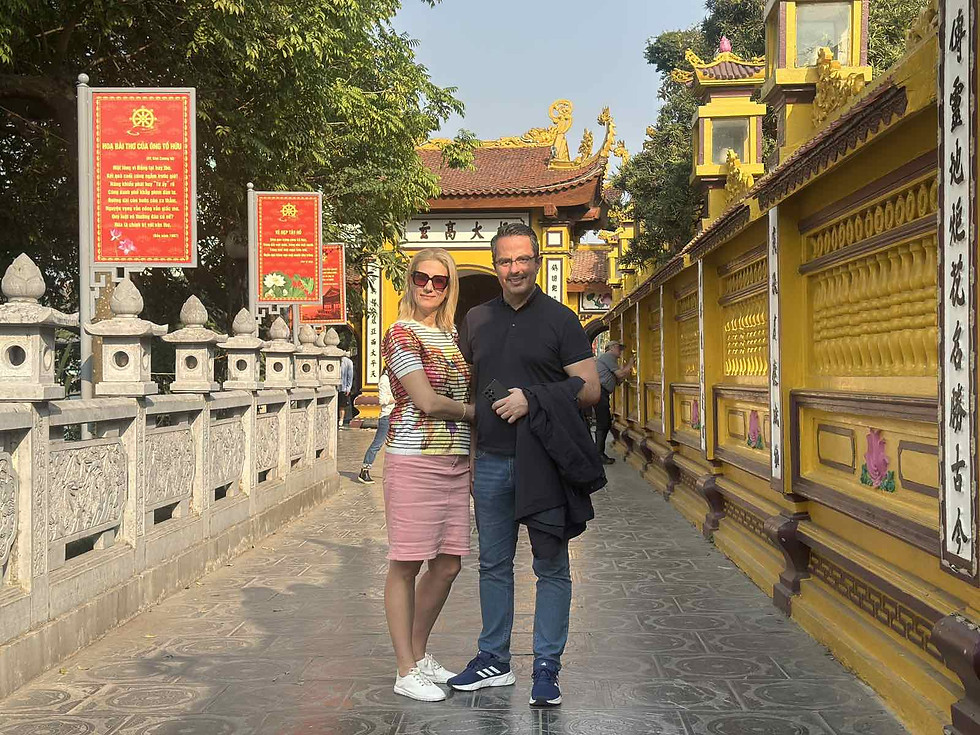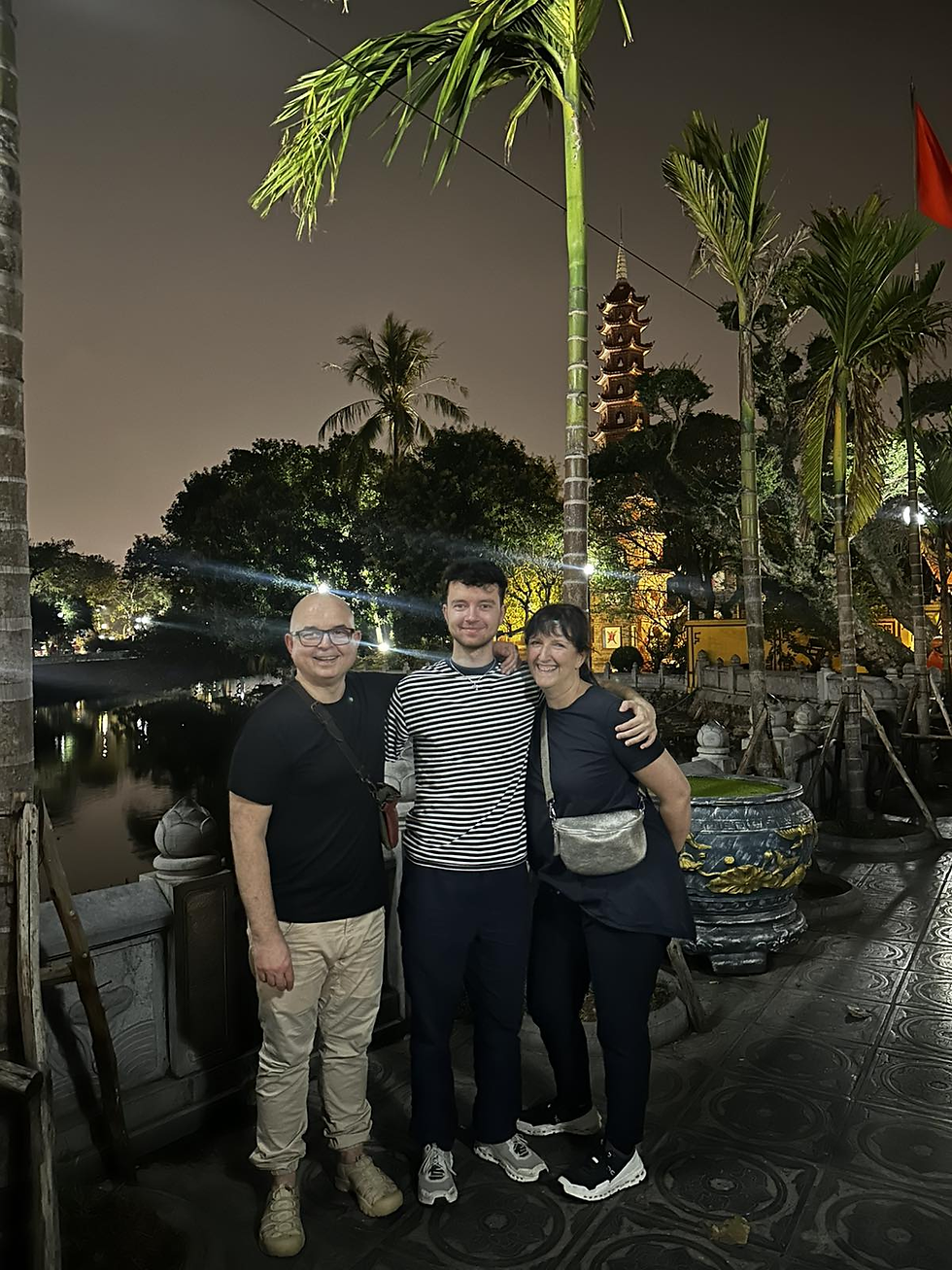6 Hidden Temples in Hanoi You Can Only Access by Vespa Tour
- Vespa Adventures

- Jul 29
- 5 min read
What Makes These Hanoi Temples Hidden from Regular Tourists?
These 6 temples remain hidden because they require navigation through narrow alleyways, residential streets, and unmarked entrances that only Vespa scooters can access. Tour buses cannot reach these locations, and most tourists never discover the secret viewing spots, underground chambers, and community gathering spaces that local guides reveal.
Whether you're visiting Vietnam for the first time or you're an experienced traveler, these Vespa tour Hanoi templesexperiences connect you directly with Vietnam's spiritual heart. 85% of temple visitors miss the cultural significancebehind architectural details, prayer rituals, and historical stories that transform sightseeing into meaningful cultural exchange.

Which Temple Served as Vietnam's First University?
The Temple of Literature, built in 1070 AD, served as Vietnam's first university for over 700 years. Located in Ba Dinh District, this temple houses 82 stone tablets (Stelae of Doctors) honoring doctoral graduates from the 15th-18th centuries—the only surviving records of Vietnam's ancient educational system.
Local guides reveal hidden details that 90% of visitors miss: dragon carvings by specific artisan families, lotus motifs with secret meanings, and architectural elements that ancient scholars used as sundials. The temple's five courtyards each represent different stages of Confucian learning philosophy.
Vespa scooters provide the perfect approach to this cultural treasure, allowing respectful arrival during peaceful morning hours. For deeper cultural understanding, explore our comprehensive Temple of Literature cultural significance guide.

Where Can You Find Hanoi's Most Photographed Temple Bridge?
Ngoc Son Temple sits on Jade Mountain island, accessible via the iconic red Huc Bridge over Hoan Kiem Lake.This 18th-century temple honors the legendary giant turtle that helped Vietnamese kings defeat Chinese invaders—the preserved turtle remains are displayed inside the temple.
The secret viewing spots include: hidden alcoves for personal offerings, feng shui positioning that creates perfect lake reflections, and chambers where local practitioners perform dawn prayers. 75% of photographers miss the optimal angles that capture both temple architecture and lake mirror effects.
Located in Hoan Kiem District, this temple connects perfectly with our Insider's Hanoi morning tours. Professional photography enthusiasts often continue with our specialized Hanoi photo tours to capture these secret perspectives.
What's the Oldest Guardian Temple Protecting Hanoi?
Bach Ma Temple, founded in the 11th century, protects Hanoi as the city's official guardian temple. Hidden deep in Old Quarter alleyways near Dong Xuan Market, this temple honors the White Horse spirit that guided King Ly Thai To to establish Hanoi's current location.
Community gathering insights reveal: three generations of families worship together here, specific prayer rituals passed down through centuries, and the temple's dual role as spiritual sanctuary and neighborhood social center. Only 20% of visitors understand how guardian temples differ from regular Buddhist or Confucian temples.
The narrow alleyway access requires Vespa navigation through residential areas that most tourists never explore. Understanding the cultural significance of Vespa scooters in Vietnam adds cultural depth to your temple discovery experience.
Which Temple Has Hanoi's Oldest Buddhist Architecture?
Tran Quoc Pagoda, built in the 6th century, holds the distinction as Hanoi's oldest Buddhist temple. Located on West Lake peninsula, this pagoda features an eleven-story lotus tower that symbolizes Buddhist enlightenment stages—each level represents different spiritual development phases.
Hidden meditation gardens provide: peaceful spaces away from main tourist areas, optimal sunrise photography angles, and lotus tower reflections that create perfect symmetry in calm waters. The secret architecture elements includesymbolic carvings that most visitors overlook and meditation chambers designed according to ancient Buddhist principles.
The lakeside location requires Vespa access through residential neighborhoods that connect to our broader spiritual journey experiences at Tran Quoc Pagoda. Morning visits offer the most authentic spiritual atmosphere.



Where is Vietnam's Buddhist Headquarters Hidden?
Quan Su Temple serves as the headquarters for Vietnamese Buddhism but remains overlooked by 80% of tourists.Located steps from Hanoi's commercial district, this temple coordinates Buddhist activities for the entire country while maintaining active community worship spaces.
Architectural secrets include: symbolic elements carved into wooden beams, meditation chambers that few visitors discover, and the temple's role in training Buddhist leaders nationwide. Community gatherings here demonstrateauthentic Vietnamese Buddhist practices that differ significantly from tourist-focused temple presentations.
The temple's central location makes it easily accessible during Hanoi Vespa tours, perfectly complementing visits to other cultural sites that showcase what makes Hanoi culturally significant beyond standard tourist attractions.
What Temple Transforms War History into Spiritual Peace?
Huu Tiep Temple uniquely displays B-52 bomber wreckage from the Vietnam War within active Buddhist temple grounds. Located in Ngoc Ha neighborhood near Ba Dinh District, this temple demonstrates how Vietnamese Buddhist communities transform symbols of destruction into spaces for reflection and healing.
The historical-spiritual integration includes: preserved aircraft remains surrounded by prayer altars, meditation spaces that encompass both war memory and peace practice, and community ceremonies that honor both conflict survivors and spiritual traditions. This represents Vietnam's only temple where modern war history and ancient spirituality coexist in daily worship.
Residential street access requires Vespa navigation that most tour groups cannot manage. This unique experience complements other cultural destinations within 40km of Hanoi that reveal different aspects of Vietnamese resilience and cultural adaptation.


How Should You Behave Respectfully in Vietnamese Temples?
Vietnamese temple etiquette requires removing shoes at designated areas, covering shoulders and knees, and understanding which shrines welcome visitors versus those reserved for regular practitioners. 95% of cultural misunderstandings stem from not knowing proper incense lighting procedures and prayer observation protocols.
Essential etiquette guidelines include: lighting incense in odd numbers only, maintaining silence in meditation areas, bowing respectfully before shrines, and recognizing when ceremonies are private versus open to respectful observation. Local guides demonstrate proper hand positions and explain why certain temple areas require specific behaviors.
Cultural sensitivity training transforms tourist visits into meaningful exchanges where respect and curiosity create authentic connections with local practitioners. Many visitors extend their cultural learning through sacred architecture experiences throughout Vietnam.

What's Included in Hanoi Vespa Temple Experiences?
Hanoi Vespa temple experiences include well-maintained scooters, safety equipment, cultural briefings, and access to temple insights that typical visitors miss. Tours can be customized for individual temples or combined visits based on your interests and available time.
Standard inclusions feature: licensed professional guides with temple community relationships, helmet and safety gear, bottled water, cultural etiquette instruction, and assistance with temple customs throughout your journey. Meeting points are convenient throughout Hanoi, with flexible scheduling to match your preferences.
Customization options allow: focusing on 2-3 temples for deeper exploration, broad overviews of multiple sites, photography-focused visits, or spiritual practice participation where appropriate. Whether you're interested in historical significance, architectural details, or spiritual practices, guides tailor experiences to your specific interests.
Frequently Asked Questions About Hidden Hanoi Temple Access in Vespa Tour
How do Vespa tours access temple areas that regular tourists cannot see?
Local guides have built relationships with temple communities over many years through respectful behavior and cultural understanding. This enables access to meditation chambers, hidden viewing spots, and cultural insights that guidebooks miss, while always maintaining respect for temple sanctity and community practices.
What makes these 6 temples "hidden" compared to other Hanoi attractions?
These temples remain hidden because they require navigation through narrow residential streets, unmarked entrances, and local knowledge of optimal visiting times. The "secrets" include cultural insights, architectural symbolism, and community practices that only locals understand—transforming visits into cultural education rather than simple sightseeing.
Can visitors participate in temple ceremonies without being Buddhist?
Non-Buddhist visitors can respectfully observe and participate in appropriate temple activities when guided by cultural experts. Our guides ensure proper behavior understanding, explain spiritual significance, and help visitors appreciate sacred spaces respectfully regardless of personal beliefs—many describe these as deeply meaningful cultural experiences.
What clothing is required for Vietnamese temple visits?
Temple visits require modest clothing covering shoulders and knees, comfortable shoes easily removed at entrances, and appropriate headwear that can be removed respectfully. We provide safety equipment for Vespa portions and recommend lightweight, breathable fabrics suitable for Hanoi's climate while maintaining cultural sensitivity.
How long do customized temple visits typically take?
Temple visits can range from 1-hour focused experiences at single temples to 4-hour comprehensive cultural journeys visiting multiple sites. Duration depends on your interests—some guests prefer deep exploration of 2-3 temples while others enjoy broader overviews—guides help customize timing to match your pace and cultural curiosity.



Comments